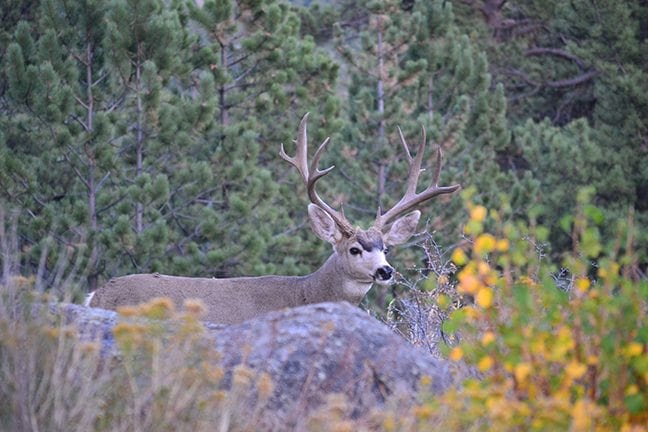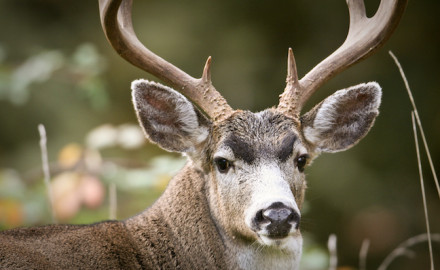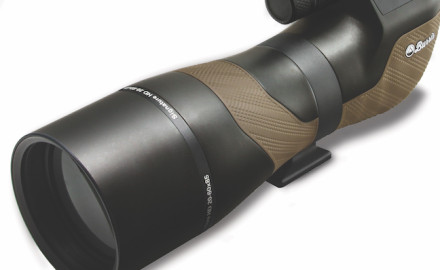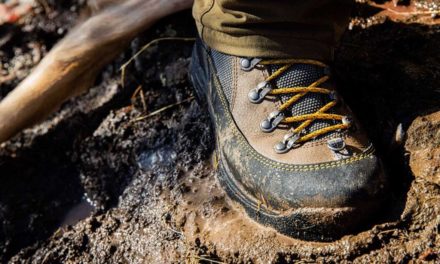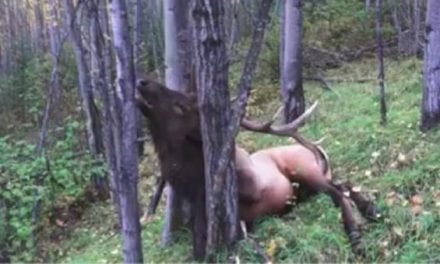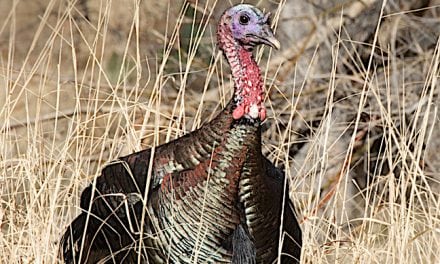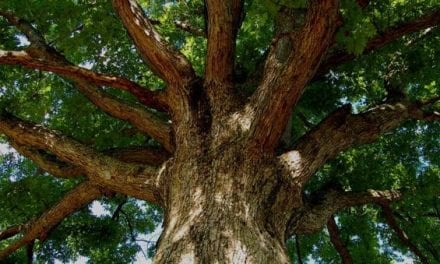These tips and locations will help you tag a California mule deer this season.
By Cal Kellogg

Photo Courtesy of Shutterstock
Why do hunters want to hunt mule deer in California? Are they looking for a trophy? Do they simply want to hang a tag on a mule deer, any mule deer? Or are they looking to fill their freezer with succulent venison?
While I don’t have a definitive answer to these questions, I think a quick glance at the hunt data provided by the California Department of Fish and Wildlife gives us a pretty good indication of what is likely on the minds of most aspiring California mule deer hunters and provides us with a path to follow as we embark on a discussion of California’s public land mule deer hotspots for 2017.
The first thing to know is that most, but not all, California mule deer reside in the state’s 17 X Zones. These zones are crowded along the eastern boundary of the state with Great Basin desert terrain to the east of them and the crest of the Sierras or Cascades to the west.
In terms of total territory, the X Zones are a relatively small area. Combined the X Zones represent less then 20 percent of the state’s entire geographic area. In 2016, a grand total of 6,255 tags for issued for these 17 zones, yet 33,700 applications were submitted requesting a tag. When you crunch these numbers, you find that fewer than 20 percent of the folks that expressed interest in hunting an X Zone received a tag. Stretch this data out further and you realize that on average if you apply for an X Zone tag every season you MIGHT get a tag every five years or twice a decade.
Clearly if your goal is to keep a good supply of venison on hand, the X Zones shouldn’t be your choice since you simply won’t be in a position to hunt deer most of the time.
Likewise, if your goal is simply tag a representative mule deer, there are a number of Western states that offer over the counter tags valid in public land areas with good mule deer populations. While it’s true many of these areas don’t offer great trophy mule deer potential, they do offer hard working do it yourself hunters a great opportunity to harvest a mule deer without waiting five years to draw a tag.
This brings us to the reason that I believe drives most California hunters to apply for much coveted X Zone tags … big bucks. Note that I said big, not trophy. Massive mule deer bucks do exist in California, and a handful of them are harvested every fall. But in general, massive public land mulies are as rare or even rarer in the Golden State then they are in every other Western state. Yet the X’s do offer the opportunity to bag the buck of a lifetime. While a mature mule deer residing in a California X Zone might not measure out as a “trophy” in the eyes of a true Western trophy hunter, they are much larger and much more awe inspiring than the 100-pound blacktail bucks most of us California hunters cut our teeth on!
This being the case, let’s look deeper, determine which X Zones, which General Zones and which Special Hunts might be the best target for you and then explore what some of the better areas for harvesting your mule deer “buck of a lifetime” might be.
THE BEST OF THE BEST
When a lot of us think of big California bucks in general and of big mule deer bucks specifically, we think of the northern X Zones. To be sure the zones north of Lake Tahoe all the way up to the Oregon border do hold some monster bucks, but the reality is that some of the biggest bucks and best hunting for them occurs in the southern desert region.
Zone X9B is home to some jaw dropping bucks, but of course there are problems. For starters, it’s just about as tough to get a tag in X9B as it is in any X Zone. For example, in 2016, 325 tags were issued, but a total of 877 people applied for them. So right off the top you’re in for an uphill climb. And while 32 tags were issued randomly without preference points playing a role, the remaining 293 tags awarded were won by hunters that had an accumulation of points.
The mule deer that inhabit X9B are Inyo mule deer and the herd is known as the Goodale deer herd. These deer spend the summer in areas of the southern Sierra that range from 8,000 to 14,000 feet in elevation and migrate down into middle elevation areas between 4,500 and 7,500 feet when snow, freezing temperatures and the rutting urge prompt them out of the high country. This typically occurs in mid to late October. When heavy snows come early the migration can be intense. When the onset of winter conditions is more gradual, the deer tend to trickle down in small groups.
During the general season deer tend to be scattered widely throughout the zone and often post up in the most unforgiving terrain they can find. Successful hunters are typically the hunters that do the best job of scouting. And that doesn’t mean driving the roads. You’ve got to hike and find those micro areas that are holding deer. Once you find them control your scent and take a low impact approach, because if you spook them they will melt into the terrain and relocate in another area.
While X9B’s bucks may be widely distributed in the general season, once winter conditions descend on the southern Sierras much of the Goodale herd, including its big blocky bucks, tend to concentrate in a well-defined area.
This brings us to what many consider California’s best deer hunt, the G3 Goodale Buck Hunt. The 2017 G3 hunt is slated to take place from Dec. 2 to 17 during the peak of the rut. In 2016, 94 percent of the hunters that received a tag for the G3 hunt tagged a buck. And now the bad news…
If you get your hands on a G3 tag all is well in the world, but your chances of scoring that tag even with a stack of preference points is slim. In 2016, 4,389 people asked for a G3 tag as their first choice. Other than the 3 people who won tags randomly without preference point consideration the remaining 32 tags went to folks that had accumulated 14 points! This being the case you’re looking at a 14-year wait just to get into the pool of hunters that have a realistic shot at drawing a tag. That’s quite a commitment, but for the privileged few that get tags the hunt is often epic. A full 63 percent of the bucks tagged in 2016 were 4-points, and 9 percent sported 5 or more points.
OTHER SOLID ZONES
If you travel way up north nearly to the Oregon border you encounter the zone known as X1. This is the largest X Zone in the north state and from a purely statistical standpoint, it offers hunters the largest amount of tags of any X Zone and one of the highest hunter success rates.
In 2016, 760 tags were issued for X1 and 51 percent of those tag holders brought home a buck.
There were a total of 3,268 applicants for X1 tags last year. While 76 tags were awarded randomly, 684 where allotted based on preference points. It took from 2 to 10 points to get drawn. About 35.8 percent of the bucks taken were 3-points, 25.9 percent had 4 points, and nearly 9 percent sported 5 or more points.
X4 is another far north zone that offers a decent shot at a tag and a good hunter success rate. Last season 460 tags were issued and with very favorable weather 57 percent of those hunters scored a buck.
A total of 1,731 hunters tried for an X4 tag as a first choice. While 45 drew random tags, 414 used their preference points. It took from 2 to 12 points to score a tag.
The point count of the bucks harvested was similar to that of X1 with, 33.1 percent of the bucks having 3 points, 28.9 percent having 4 points and 6.7 percent boasting 5 or more points.
In the central Sierra, X7A offered the best success rate at 49 percent with 230 tags issued. X7b and X8 lagged behind. The 135 tag holders in X7B filled 42 percent of their tags while only 27 percent of the 210 X8 hunters ate venison.
EFFORT PLUS LUCK EQUALS SUCCESS
The hard truth about hunting mule deer in California’s X Zones is that it takes both hard work and a turn of good luck to be successful. As we’ve seen it can take years to scrape together enough preference points to have a shot at one of the better tags. Even then, you’ll need luck on your side to beat out the other guys that likewise have accumulated a bucket of points.
When you do draw a tag it can mean almost guaranteed success in some areas, but in most zones the work really begins once you’ve got the tag. If you’re plan is to drive around and road hunt your chances of scoring that dream buck aren’t very good.
To get a wall hanger it generally takes a healthy investment in both time and boot leather spent scouting. And you’ve got to be in good shape. You can’t wait until you draw a tag and begin hitting the treadmill a few times a week in hopes of getting into condition. If you are planning to chase mule deer bucks in the alpine basins of the Sierras fitness and conditioning need to be part of your lifestyle, not an afterthought once you receive your tag.
EASY DRAWS, TOUGH HUNTS
If you’ve got the itch to hunt big bucks in the desert Zone D 12 way down south in Riverside County might be perfect for you. There is a ton of BLM land to roam, and there are wilderness areas in the zone that don’t allow vehicles.
In 2016, 950 tags were issued for the zone, with a total of 1,202 hunters requesting a D 12 tag as a first choice. 95 tags were issued randomly and for the remaining 855 tags it took anywhere from 0 to 12 points to win a tag. This is an area that offers a good chance of getting a tag year after year, and it produces some monsters. While the success rate was only about 20 percent last season, about 38 percent of the bucks tagged were 4 points or better!
Did you know that for a California buck to be considered a blacktail by the Boone and Crockett Club it basically has to be taken west of Highway 5? Why?
East of Highway 5 there are a lot of hybrid blacktail/mule deer bucks that attain great size both in terms of their bodies and their antlers. It’s not fair to measure these bucks against purebred blacktail bucks.
If you’re looking for a challenging mule deer hunt that can end with your tagging an absolute monster buck without having to deal with draws and preference points, the high-country hunting available in Zones D 3, 4, 5 and 6 might be perfect for you. These tags are issued on a first come first serve basis until the quotas are met. And these are two-deer areas in that you can purchase two tags for these zones.
You can fill your first tag with a meat buck and hold onto that second tag until a wall hanger shows up. Deer densities in these zones are low, as are success rates. The country is vast and unforgiving, and hunters that achieve success on a mule deer hunt here have a high level of mental toughness and physical stamina.
The post Mule Deer On California Public Land appeared first on Game & Fish.

